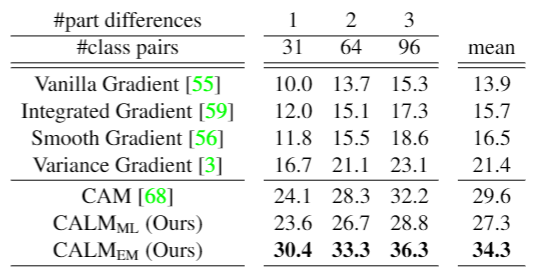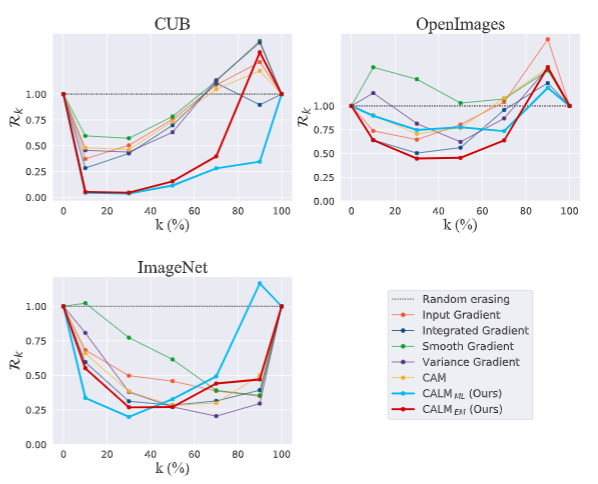calm
Keep CALM and Improve Visual Feature Attribution
Abstract
The class activation mapping, or CAM, has been the cornerstone of feature attribution methods for multiple vision tasks. Its simplicity and effectiveness have led to wide applications in the explanation of visual predictions and weakly-supervised localization tasks. However, CAM has its own shortcomings. The computation of attribution maps relies on ad-hoc calibration steps that are not part of the training computational graph, making it difficult for us to understand the real meaning of the attribution values. In this paper, we improve CAM by explicitly incorporating a latent variable encoding the location of the cue for recognition in the formulation, thereby subsuming the attribution map into the training computational graph. The resulting model, class activation latent mapping, or CALM, is trained with the expectation-maximization algorithm. Our experiments show that CALM identifies discriminative attributes for image classifiers more accurately than CAM and other visual attribution baselines. CALM also shows performance improvements over prior arts on the weakly-supervised object localization benchmarks.
Dataset downloading
For ImageNet and CUB datasets, please follow the common procedure for downloading the datasets.
For ImageNetV2, CUBV2, and OpenImages30k, please follow the procedure introduced in wsol-evaluation page.
How to use models
You can train CALM models by
$ python main.py --experiment_name=experiment_name/ \
--architecture=resnet50 \
--attribution_method=CALM_EM \
--dataset=CUB \
--use_bn=True --large_feature_map=True
You can evaluate the models on two different metrics,
$ python eval_pixel_perturb.py --experiment_name=experiment_name/ \
--architecture=resnet50 \
--attribution_method=CALM_EM \
--dataset=CUB \
--use_bn=True --large_feature_map=True \
--use_load_checkpoint=True \
--load_checkpoint=checkpoint_name/ \
--score_map_process=jointll --norm_type=clipping &
$ python eval_cue_location.py --experiment_name=experiment_name/ \
--architecture=resnet50 \
--attribution_method=CALM_EM \
--dataset=CUB \
--use_bn=True --large_feature_map=True \
--use_load_checkpoint=True \
--load_checkpoint=checkpoint_name/ \
--score_map_process=jointll --norm_type=clipping --threshold_type=log &
Pretrained weights
For those who wish to use pretrained CALM weights,
| Model name | Dataset | cls. accuracy | weights |
|---|---|---|---|
| CALM_EM | CUB | 71.8 | link |
| CALM_EM | OpenImages | 70.1 | link |
| CALM_EM | ImageNet | 70.4 | link |
| CALM_ML | CUB | 59.6 | link |
| CALM_ML | OpenImages | 70.9 | link |
| CALM_ML | ImageNet | 70.6 | link |
Explainability scores
Cue localization and Remove-and-classify results. More details about the metrics are in the paper.
| Cue localization (the higher, the better) |
Remove-and-classify (the lower, the better) |
|---|---|
 |
 |



